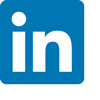Telling Our Story
Facebook | Twitter | Instagram | LinkedIn| Media | Professional Journals | Boilerplate
Social Media
The marketing and communications team manages the University of Arizona College of Medicine – Phoenix’s official social media accounts. If you or your department have any questions regarding social media, please refer those questions to Chase Congleton, Marketing and Communications Information Specialist.
We welcome input to help develop original content for our social media platforms. In order to maintain a consistent brand image, we would prefer to use the official accounts to share information related to the College rather than have a number of social media pages that may be seldom used or updated.
Participating in social media is time-consuming. To do it well, page administrators must develop original content with compelling imagery and post often to encourage engagement. Likewise, page administrators should check their page(s) at least once daily to respond to questions and posts. If you are interested in having a social media presence for your department or center, please contact us to discuss options.
We invite you to follow us on social media, if you haven’t already. The College’s official handle is @uazmedphx. Our commonly-used hashtags are #uazmedphx, #BearDown, #medicaleducation, #FutureMD and #FactsWithFogerty. We utilize custom hashtags for special events, such as #MatchDay and #WhiteCoatCeremony.
Platforms
Every social media platform is unique, with different engagement styles and audience expectations. Below are posting guidelines for the four most commonly used platforms.
 Facebook: Facebook allows for real-time updates and interactions, while also engaging audiences on a regular basis. Creating a consistent tone is important for maintaining brand identity. Posts that are one sentence long get the most interaction.
Facebook: Facebook allows for real-time updates and interactions, while also engaging audiences on a regular basis. Creating a consistent tone is important for maintaining brand identity. Posts that are one sentence long get the most interaction.
Posting Guidelines
Time: Schedule posts between 12:00 p.m. and 3:00 p.m. on weekdays or weekends between 12:00 p.m. and 1:00 p.m., if possible. If an event occurs during the afternoon or evening, post about it as close to real-time as possible.
- Showcase: Aspects that differentiate the College, such as student experience, research, thought leadership, collaboration, community engagement and special events.
- Engage: Engagement is how success is measured on Facebook. A call to action should be included in every post. (i.e. Read more, Learn more).
- Visual: Visuals get the most engagement, use photos and videos for the best outcome. Keep photos at an 800x600 size so that they are compatible with mobile and desktop views.
- Connect: Connect with other organizations and thought leaders to expand reach to additional audiences.
- Facebook Live: Live streaming is an effective way to showcase events and build excitement. Behind-the-scenes videos or streamed interviews with special guests spark interest and engage people who may not be able to attend the event. Keep in mind that the nature of the video does not allow for editing or retakes. Consider the surroundings and eliminate potential distractions before doing a live stream (background noise, scene interruptions, dark lighting, etc.).
 Twitter: Twitter is a news source with information being shared ASAP. While Twitter allows for 280 characters, posts should be as short as possible.
Twitter: Twitter is a news source with information being shared ASAP. While Twitter allows for 280 characters, posts should be as short as possible.
Posting Guidelines
- Visual: Adding a compelling image or video increases engagement.
- Hashtags: Best practice is to use at least one hashtag per tweet. Unless the hashtag being used is #BearDown or #uazmedphx, try to incorporate it in the text of the tweet. (i.e. Did you know that Colon #Cancer is the 4th most common type of cancer diagnosed in the #US? #uamedphx).
- Engagement: Respond to the community when appropriate. It is better to ignore trolls or those who only seek to get a reaction.
- Calls to action: Make sure to include calls to action in your posts with a link. (i.e. Read more, Learn more).
 Instagram: Instagram’s visual content is proven to perform better than text-based content.
Instagram: Instagram’s visual content is proven to perform better than text-based content.
Posting Guidelines
- Visual: Post compelling images that are high quality. Avoid using images with text overlaid unless the post is going on to the Instagram story.
- Great Stories: More than anything Instagram is a storytelling platform. It is a great tool to utilize for events, blog posts or award recognitions where photos tell a compelling story.
- Presets: The University of Arizona photography style is simple, bright and authentic. Photos should highlight the unique qualities and environment of the College.
 LinkedIn: LinkedIn is intended for brands to elevate awareness and build professional connections within their industries. Posts should stay under 500 words and only share information that is pertinent to the specialty or industry.
LinkedIn: LinkedIn is intended for brands to elevate awareness and build professional connections within their industries. Posts should stay under 500 words and only share information that is pertinent to the specialty or industry.
Posting Guidelines
- Unique Audiences: The College posts articles and spotlights that demonstrate our thought leadership and innovative endeavors. Posts should be engaging and should stand up to peer review. Media and professional organizations who are looking for experts and specialists often search LinkedIn to identify industry leaders.
- Don’t fret if the engagement rate isn’t very high. Not many people who have a LinkedIn profile are active users. However, LinkedIn users expect to see well-written content that shares industry-leading insights.
- Mobile: Most viewers on LinkedIn are on mobile devices. Therefore, they may only see the headline of posts. Make it compelling to get more engagement.
- Engage: Join LinkedIn groups and engage with others in the industry.
- Always Update: Continue to update cover photos to correspond with upcoming campaigns.
- Post Career Opportunities: Many people join LinkedIn to find job openings, so be sure to post every job opportunity to drive more traffic to the site and reach the best applicants.
Media
The University of Arizona College of Medicine – Phoenix Office of Public Affairs works closely with reporters representing media of all kinds, responding to their inquiries with information for stories about research, activities and events at the College. Generally, the media serves an integral role in telling the College’s stories to the general public. In many instances, our office contacts faculty and/or staff members who can supply appropriate information to the reporter. Sometimes, reporters contact individuals directly, without the knowledge of this office. If you are contacted by a reporter, note his or her name, phone number, media affiliation and what information you are asked to provide.
Contact the Office of Public Affairs for assistance at 602-827-2607 to let them know you have been contacted by a reporter. Public Affairs can arrange interviews and help you prepare for an interview. If your story attracts interest from the media, inform Public Affairs about your availability. Most reporters are on tight deadlines and request an interview the same day. If you are not available that day, suggest a specific time and date when you are available.
Before the interview, think about your answers so you can be sure to convey your key points. Television and radio reporters are usually looking for succinct responses. Speak briefly and plainly, avoiding complicated scientific, academic or technical terms.
Don’t hesitate to reach out to the Public Affairs team if you have an interesting story.
Professional Journals
Writing a paper that gets accepted for publication in a high-quality journal is not easy. If it were, everyone would be doing it. Academic journals publish articles that are well-written, and based on solid scholarship with a robust methodology. Your article/paper must present well-supported stories and make significant contributions to the knowledge base of the journal's specific discipline.
Often, manuscripts are rejected before even going out to review because they are poorly written or fail to meet a journal's publication requirements. Publication requirements don't just mean submission guidelines, which, of course, need to be followed, but also the more fundamental aspects of composing a publishable article.
Boilerplate
This is included in press releases, on the web and in publications:
About the College
Founded in 2007, the University of Arizona College of Medicine – Phoenix inspires and trains exemplary physicians, scientists and leaders to optimize health and health care in Arizona and beyond. By cultivating collaborative research locally and globally, the college accelerates discovery in a number of critical areas — including cancer, stroke, traumatic brain injury and cardiovascular disease. Championed as a student-centric campus, the college has graduated more than 900 physicians, all of whom received exceptional training from nine clinical partners and more than 2,700 diverse faculty members. As the anchor to the Phoenix Bioscience Core, which is projected to have an economic impact of $3.1 billion by 2025, the college prides itself on engaging with the community, fostering education, inclusion, access and advocacy.